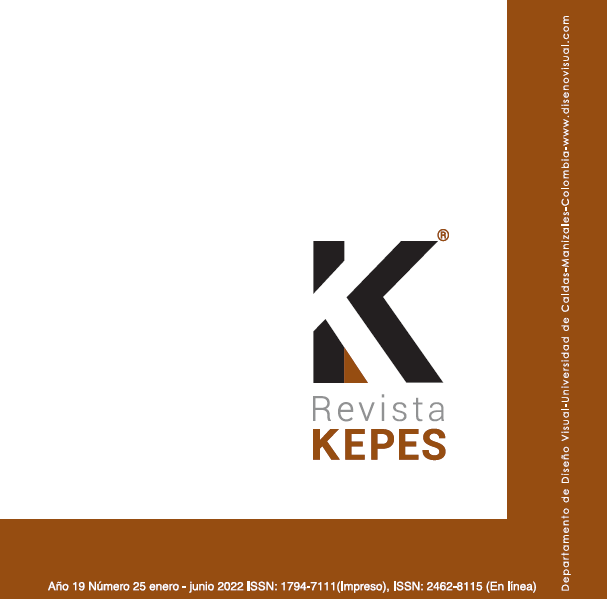Authors
Abstract
The irruption of smartphone technology in the field of photography has caused profound disruption in the consumption, creation and dissemination of images. This sector, like no other, has undergone severe reformulations in the last decade: the death of SLR photography at the hands of digital (DSLR) photography, and the death of the latter, in turn, at the hands of smartphones, all with the background of the network society. This situation deserves a deep academic reflection. A methodology based on a total of 361 students of photography subjects of the Andalusian communication Faculties (Universidad de Sevilla, Universidad de Cádiz, Universidad de Málaga and Universidad de Granada) has been designed for this research. Andalucía has been chosen because it is the autonomous community with more inhabitants in Spain, which is why the Andalusian Communication Faculties have a lot of weight in the Spanish academic scene and, in addition, it has obvious links with Latin America, which is one of the hallmarks of the Andalusian public university. This has given the possibility, on the one hand, to become aware of how these communication students relate to the photographic medium today (after the implementation of the European Higher Education Area) but, above all, based on this diagnosis, it has allowed to articulate, in the middle of the COVID-19 era, a pedagogical proposal for the teaching of photography in the university educational context that has been implemented in the 2020/21 academic year at the public Universidad de Cadiz, and whose implementation was approved the previous academic year. A new survey measured the degree of student satisfaction. It has been a proposal of praxis designed for the visual literacy of students (ability to interpret and create imageries from the study of visual language). This exercise in creativity is a fundamental competence for the practice of the communication profession.
References
Benjamin, W. (1931) [2015]. Breve historia de la fotografía. Casimiro. (Original publicado en 1931).
Blanco Pérez, M. (2021). Cine y Semiótica Transdiscursiva. Comunicación y Sociedad, 19, 1-22.
Blanco Pérez, M. y González Vilalta, A. (2020). La Barcelona de la Guerra Civil española a través de la mirada de Antoni Campañà. Análisis fotográfico e histórico. Historia y Comunicación Social, 25(2). 309-321. http://dx.doi.org/10.5209/hics.69993
Blanco Pérez, M. (2021). Cine y Semiótica Transdiscursiva. Comunicación y Sociedad. Año 19. 1-22.
Bourdieu, P. (2003). Un arte medio. GG.
Chalfen, R. (1987). Snapshot Versions of Life. Bowling Green. Bowling Green State University Popular Press.
Chaparro, S. Y. (2015). Una mirada en blanco y negro: resignificación de la fotografía. Kepes, 11, 163-175. 10.17151/kepes.2015.12.11.9
Dondis, D. A. (1973) [2017]. La sintaxis de la imagen. GG.
Fernández de Alarcón, B. y González de la Rubia, M. I. (2020). Leer entre costuras: la conexión entre la estética y la sociedad en el siglo XX. Bajo Palabra, 24, 415-430. https://doi. org/10.15366/bp.2020.24.021
Fontcuberta, J. (2008). Historias de la fotografía española. Escritos 1977-2004. GG.
Freund, G. (1974) [2017]. La fotografía como documento social. GG.
Hernández, R., Fernández, C. y Baptista, P. (2010). Metodología de la investigación. McGrawHill.
Lister, M. (2007). A Sack in the Sand. Photography in the Age of Information. Convergence: The International Journal of Research into New Media Technologies, 13(3). 251-274. https://doi. org/10.1177/1354856507079176
López-León, R. (2017). El aula de diseño como escenario de exploración entre alfabetidad visual y pensamiento crítico. Kepes, 15, 173-194. 10.17151/kepes.2017.14.15.7
Martín, M., García, S. y Rodríguez, A. (2020). Conservar, conversar y contestar. Grietas y relecturas del álbum familiar. Arte, Individuo y Sociedad, 32(4), 1065-1083. https://dx.doi.org/10.5209/aris.66761
Marzal, J. (2007). Cómo se lee la fotografía. Cátedra.
Marzal, J. y Soler, M. (2011). Hábitos de consumo y usos de la fotografía en la era digital entre estudiantes de comunicación. Comunicar, XIX(37), 109-116. http://dx.doi.org/10.3916/ C37-2011-03-02
Moholy-Nagy, L. (1925) [2004]. Pintura, Fotografía, Cine. GG.
Morgado-Aguirre, B., López-Martín, E. y Conesa-Tejada, S. (2015). El uso de las TIC en la enseñanza universitaria de la fotografía. Primeros resultados del proyecto de innovación
docente de la Universidad de Murcia. Arte, Individuo y Sociedad, 27(2), 295-319. http://dx.doi.org/10.5209/rev_ARIS.2015.v27.n2.45150
Newhall, B. (2002). Historia de la fotografía. GG.
Pérez, J. A. y Bedoya, C. M. (2020). La fotografía como herramienta para el desarrollo de la creatividad y la alfabetidad visual: investigación en el aula. Kepes, 16(20), 377-404.10.17151/kepes.2019.16.20.14
Rodrigo, D., Aguaded, I. e Iglesias, M. (2017). La universidad andaluza ante las TIC. En Aguaded (Ed.), La educación mediática en entornos digitales. Retos y oportunidades de aprendizaje (pp. 51-72). Egregius.
Sontag, S. (1997) [2005]. Sobre la Fotografía. Alfaguara.
Sougez, M.-L. (2011). Historia de la fotografía. Cátedra.
Soulage, F. (2005). Estética de la fotografía. La Marca.
Spence, J., & Holland, P. (1991). Family Snaps: the Meaning of Domestic Photography. Virago.
Tagg, J. (1988). The Burden of representation: Essays on Photographies and Histories. University of Minnesota Press.
Van House, N., & Ames, M. (2007). The Social Life of Camera-phones Images. Computer/Human Interaction 2007 Conference. San Diego, California (USA). (www.chi2007.org) (28-02-2011). https://citeseerx.ist.psu.edu/viewdoc/download?doi=10.1.1.137.4299&rep=rep1&type=pdf
Vuopala, E., Guzmán, D., Aljabaly, M., Hietavirta, D., Malacara, L., & Pan, C. (2020). Implementing a maker culture in elementary school – students’ perspectives. Technology, Pedagogy and Education, 29(5), 649-664. 10.1080/1475939X.2020.1796776

 pdf (Español (España))
pdf (Español (España))
 FLIP
FLIP






















